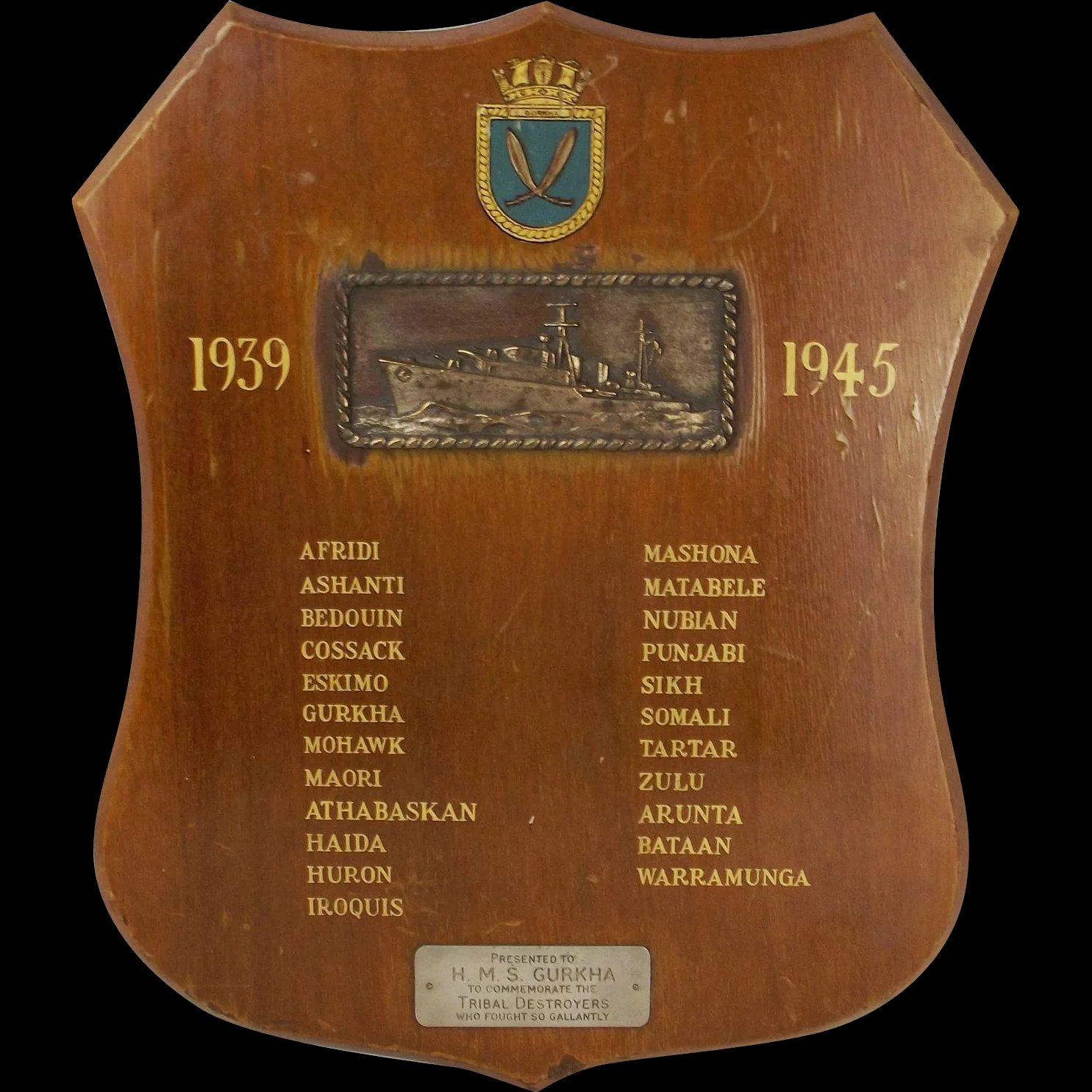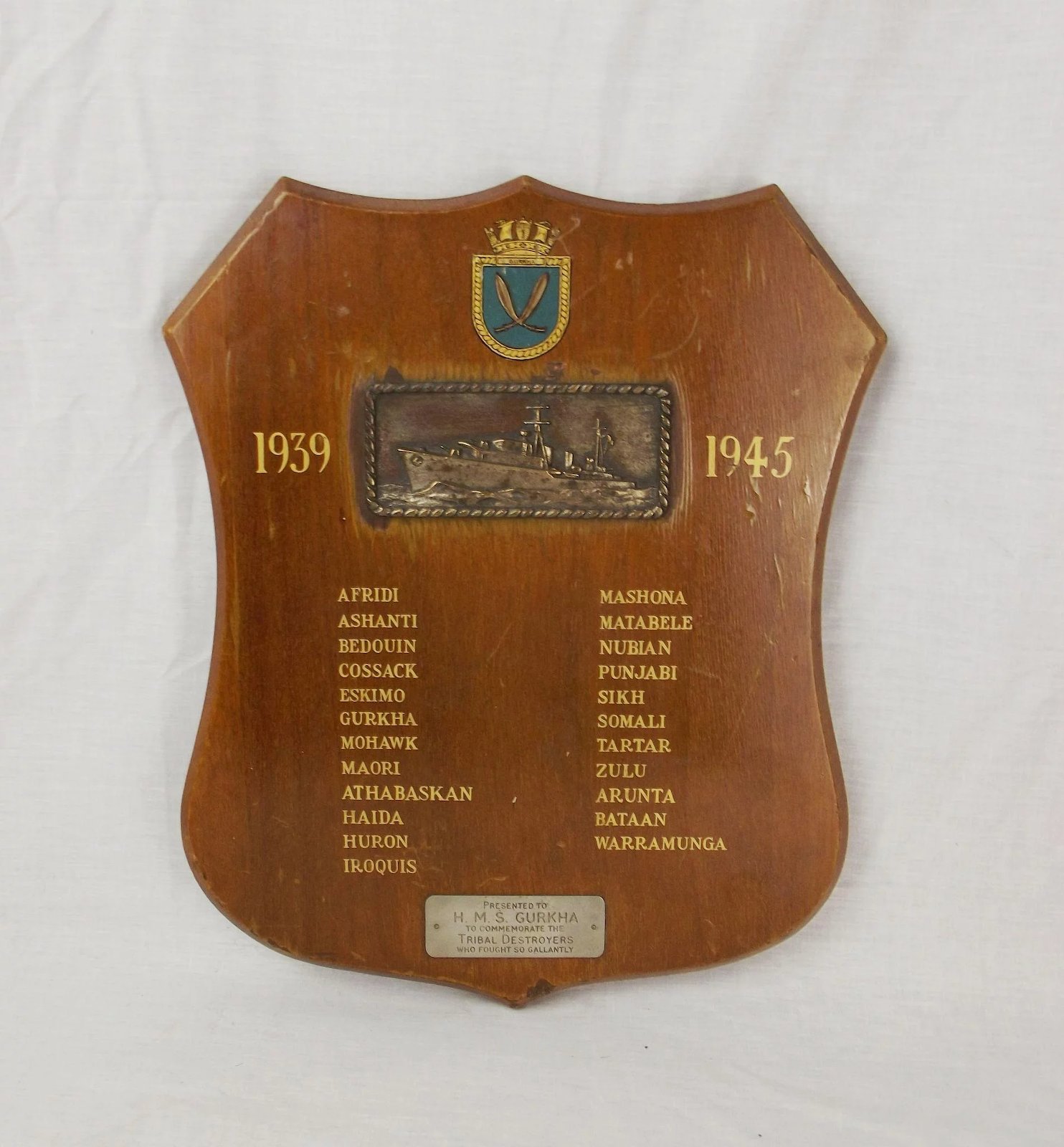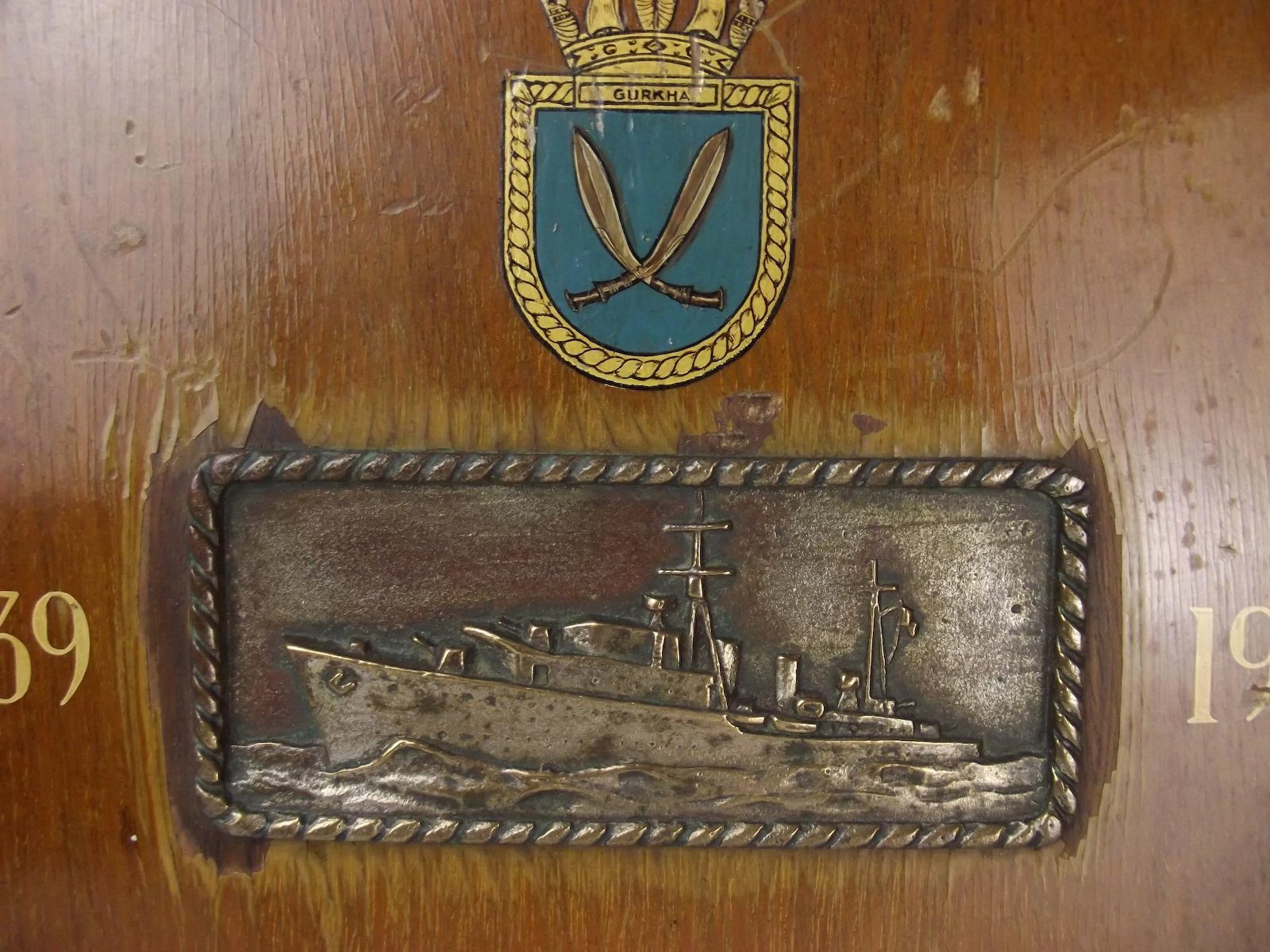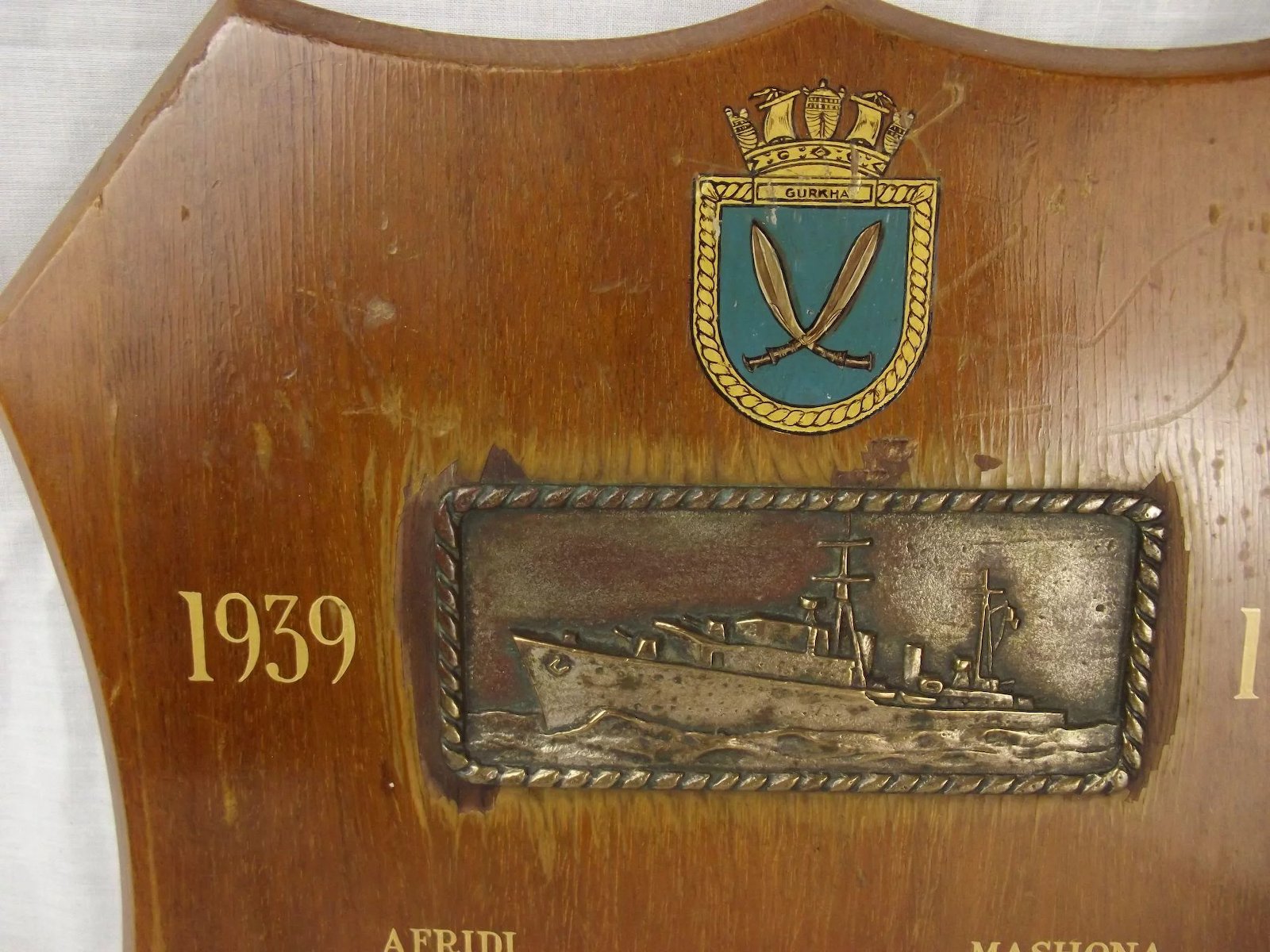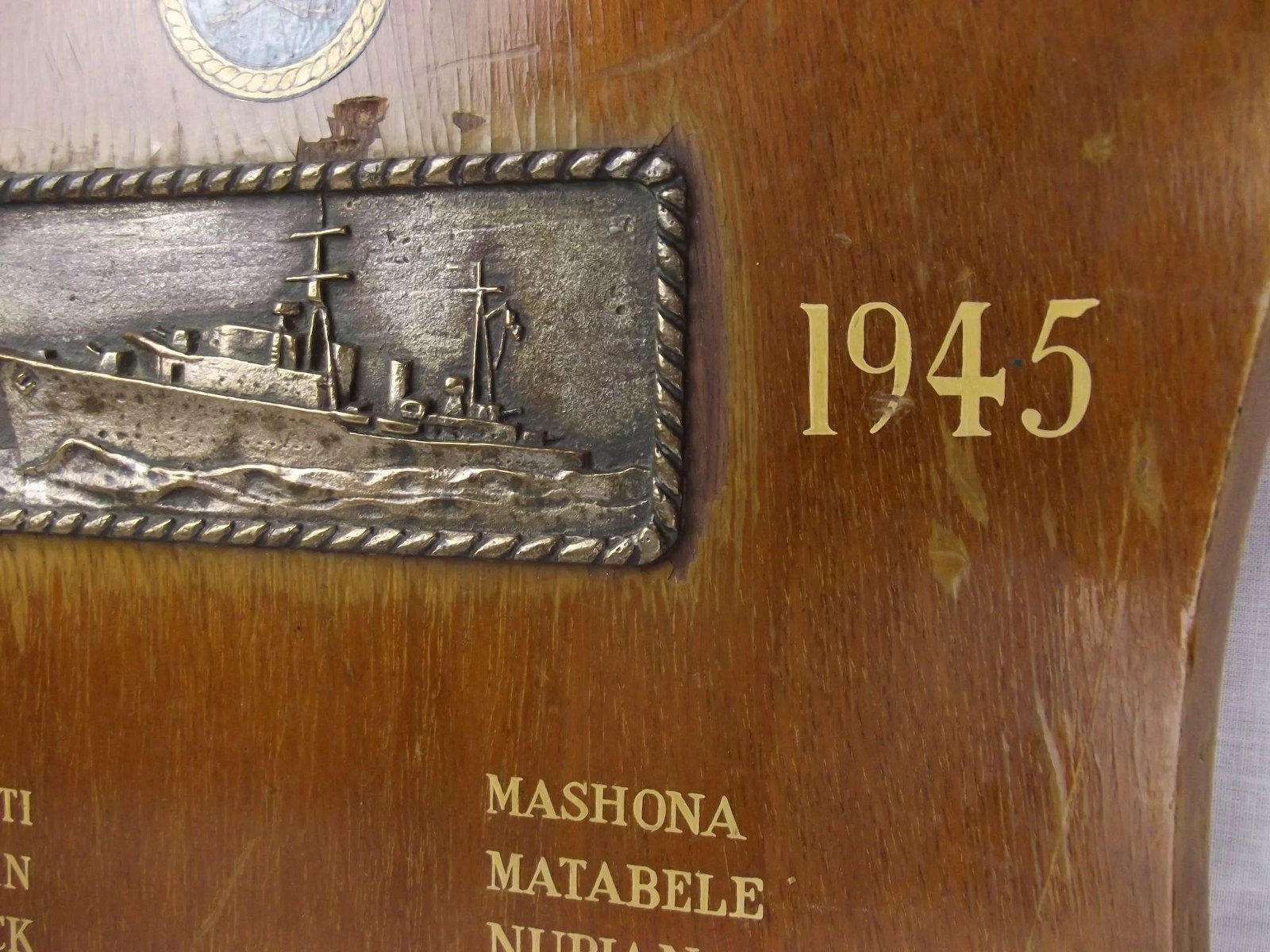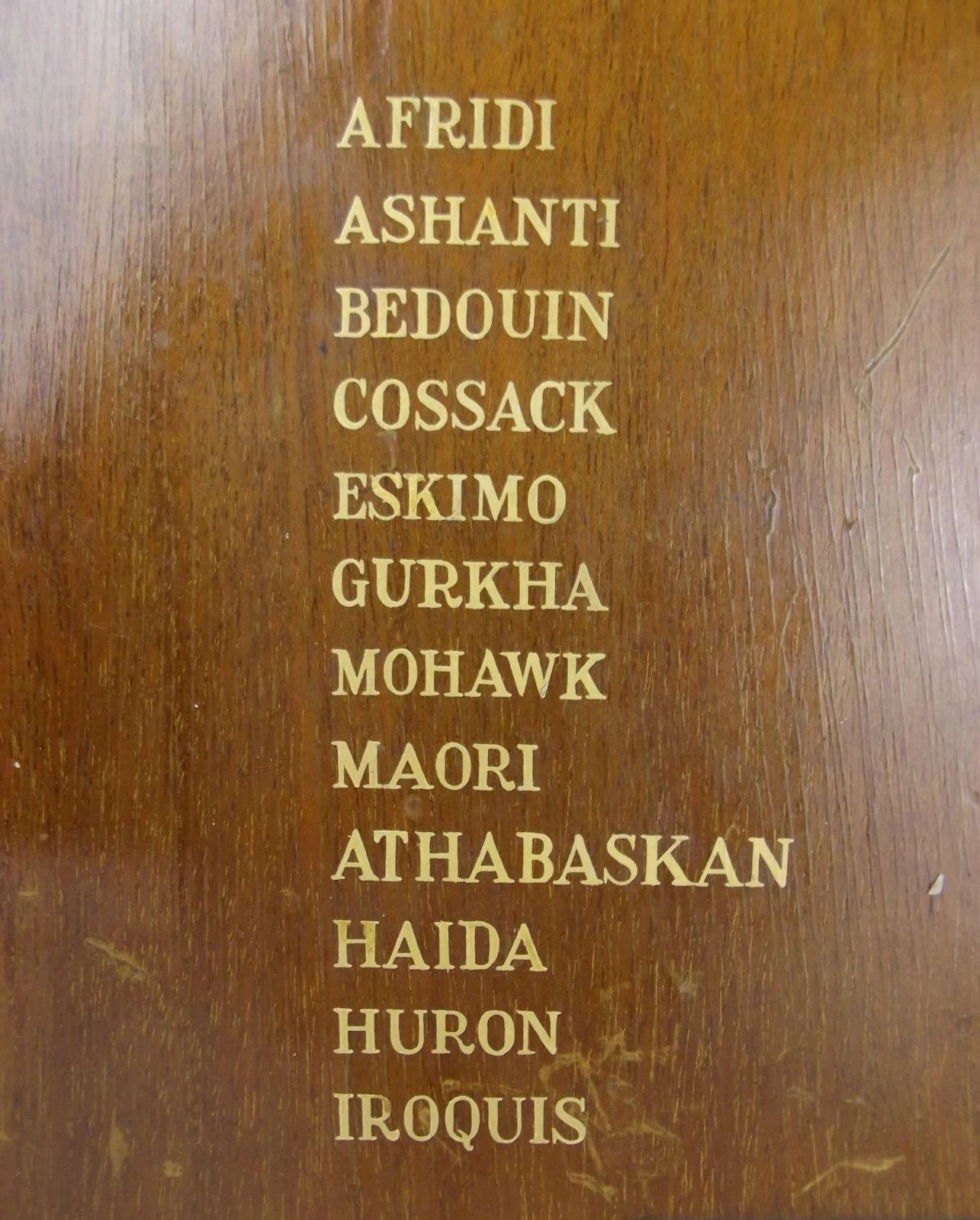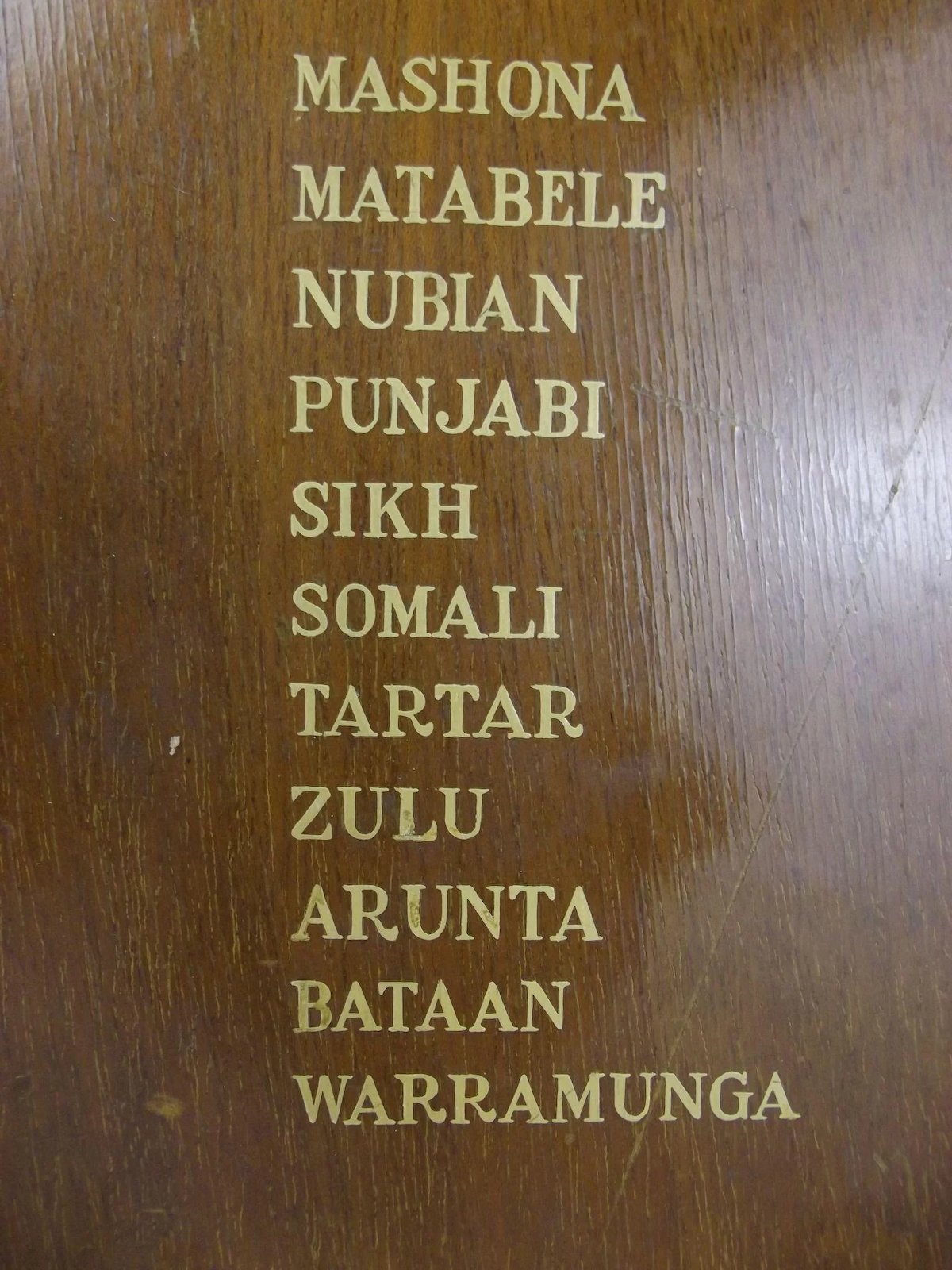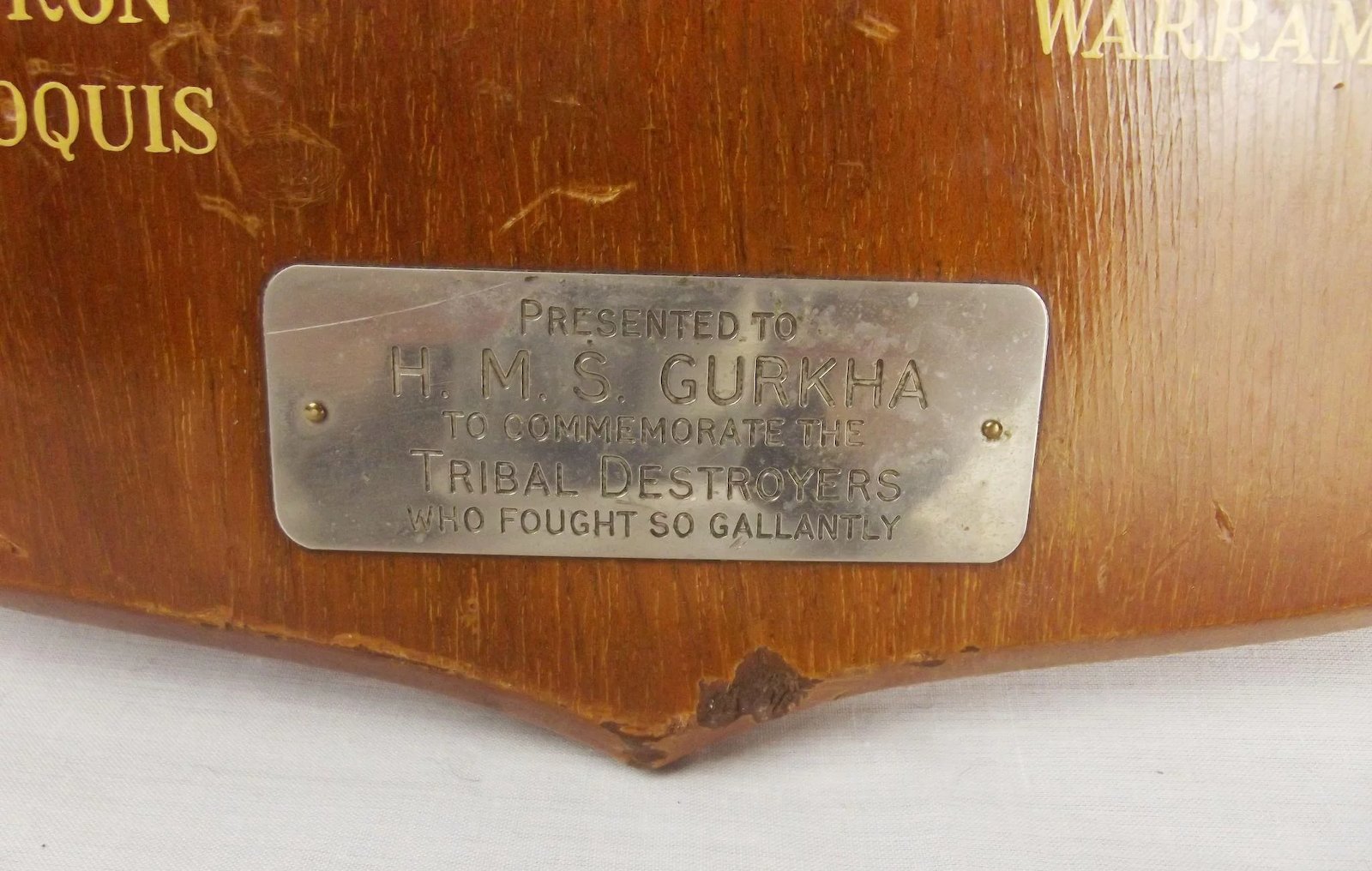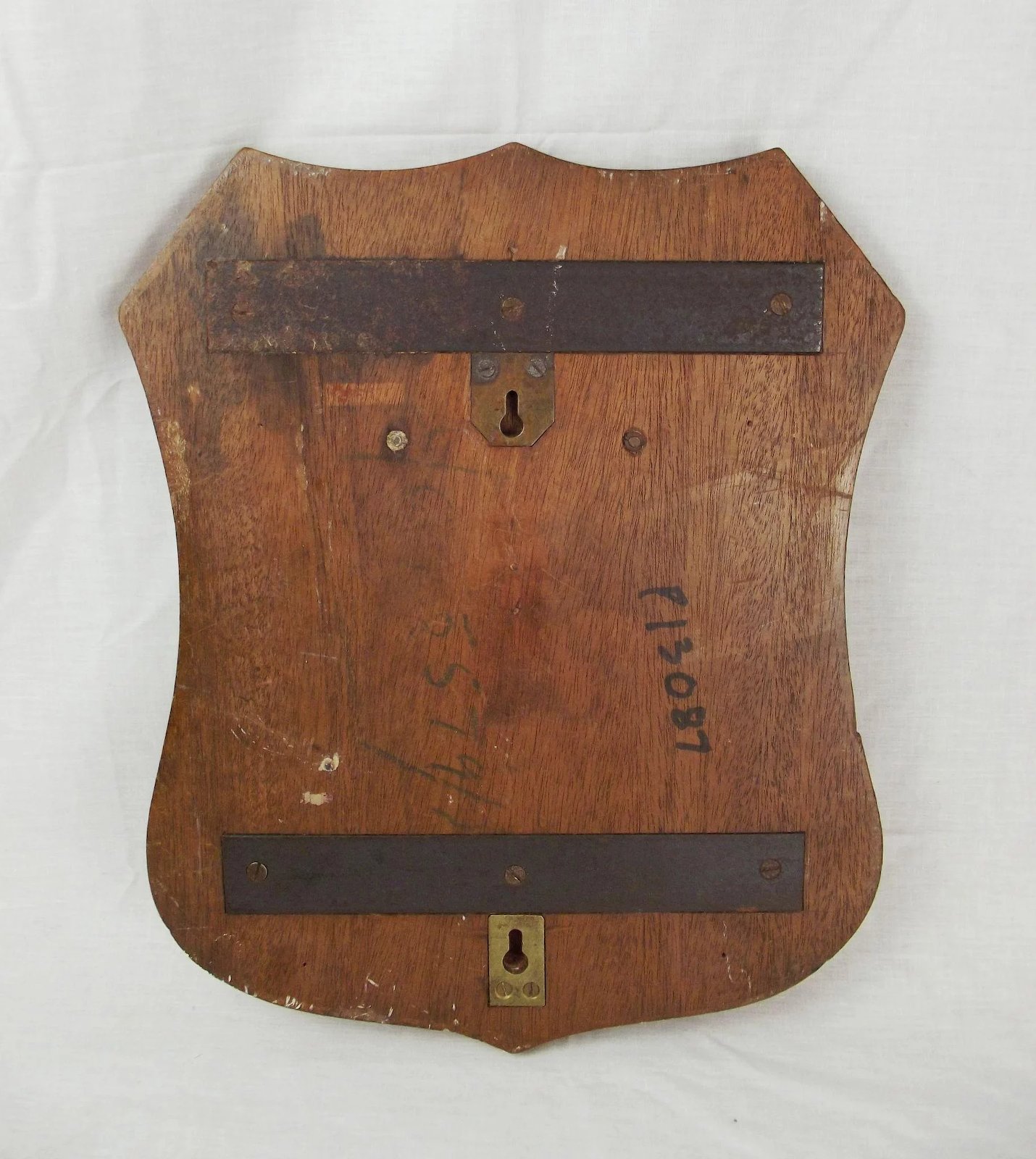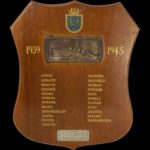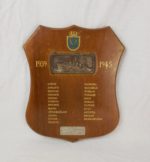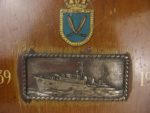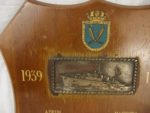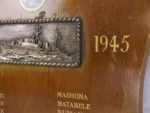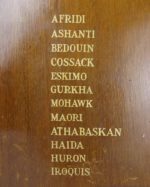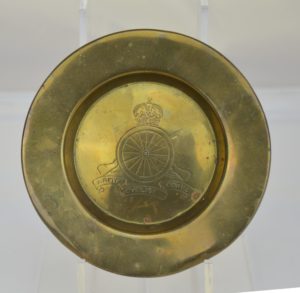HMS Gurkha WW2 Battle Honours Board
£595.00
1 in stock
Would you like to find out more about this product?
Enquire about this product
Your message was successfully sent!
Your message was sent. We will contact you shortly.
Description
We can presume, as this plaque is a WW2 commemoration piece, that it would have been presented to The Tribal Class Frigate HMS Gurkha
It has a painted image of HMS Gurkhas boat badge to the top. Below is a brass-metal plaque with an image in relief of a ship (presumably HMS
Below this are the names of 23 tribal class destroyers from ‘Afridi’ to ‘Warramunga’ including the original HMS Gurkha which was sunk in an air
There is a metal plaque to the bottom edge which reads ‘Presented To H.M.S. Gurkha To Commemorate The Tribal Destroyers Who Fought So
The wooden board has some small scratches, dents and chips and has been quite worn around the edges of the metal plaque (with the image of
The Tribal class, or Afridi class, were a class of destroyers built for the Royal Navy, Royal Canadian Navy and Royal Australian Navy that saw
As some of the Royal Navy’s most modern and powerful escort ships, the Tribal class served with distinction in nearly all theatres of World War
HMS Gurkha (F122) was a Tribal-class frigate of the Royal Navy. Launched in 1960, she was the third ship of the royal navy to take this name (or
In 1976, Gurkha supported Royal Navy efforts against Iceland during the Third Cod War. She sustained superficial damage on 7 May when the
Gurkha was present at the 1977 Spithead Fleet Review, held in honour of Queen Elizabeth II’s Silver Jubilee. At this time she was part of the 1st
Gurkha was reduced to the reserve in 1980, being placed in the Standby Squadron. Although she had been put on the disposal list,Gurkha was
After being decommissioned in 1984, Gurkha was sold to Indonesia. She was renamed Wilhelmus Zakarias Yohannes after a radiologist and
Related products
Vintage Bronze Stanchion Ring On Deck Timber
£75.00
HMS Dreadnought 1905 Battleship Souvenir Life Ring With Original Photograph
£250.00
Blue Funnel Line Pyrrhus (1949) Cargo/Liner Name Board
£375.00
Bronze Ships Wheel By Mactaggart, Scott & Co. Ltd. From Malta Port
£700.00
16th Century Elizabethan Sailors Sail Making Fid
£2,750.00

